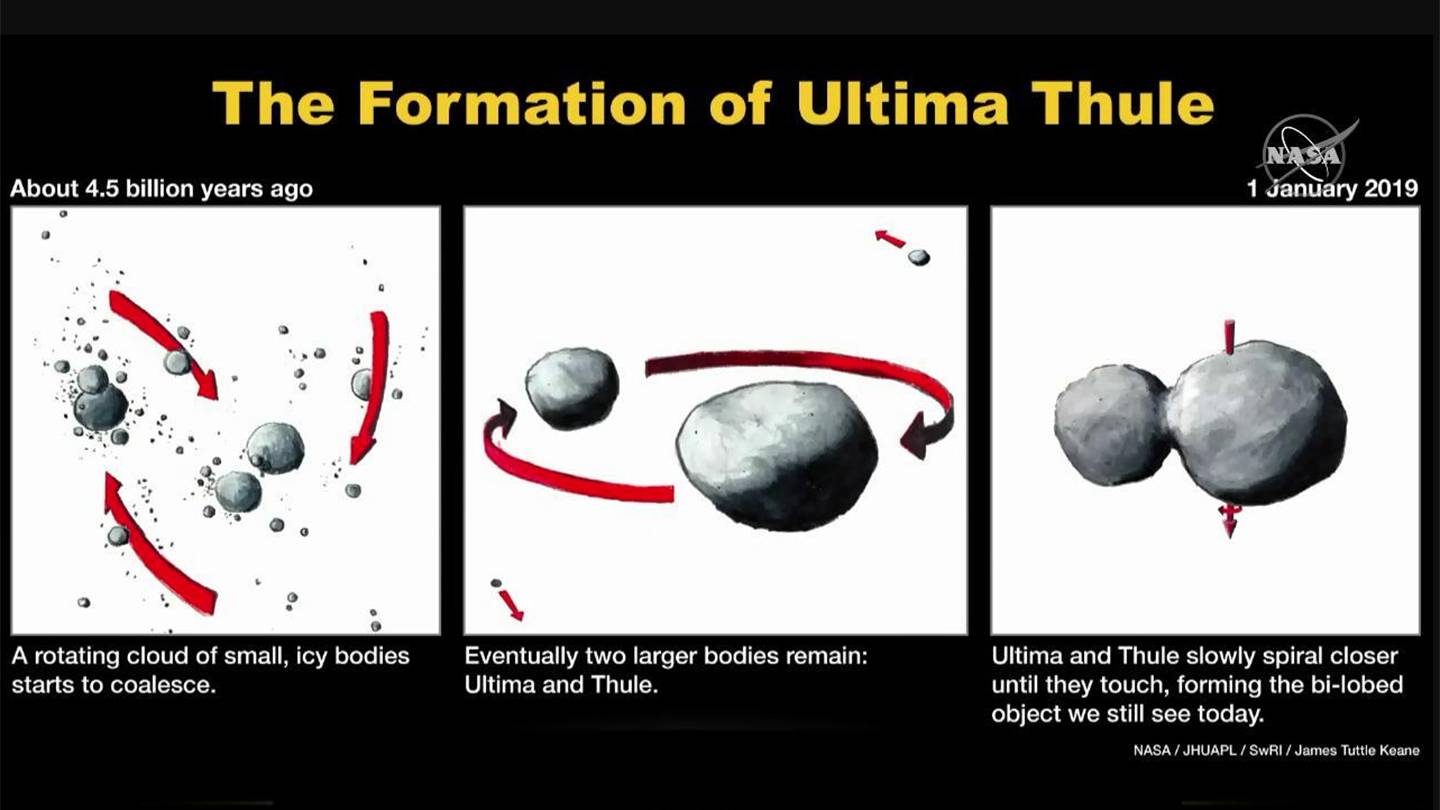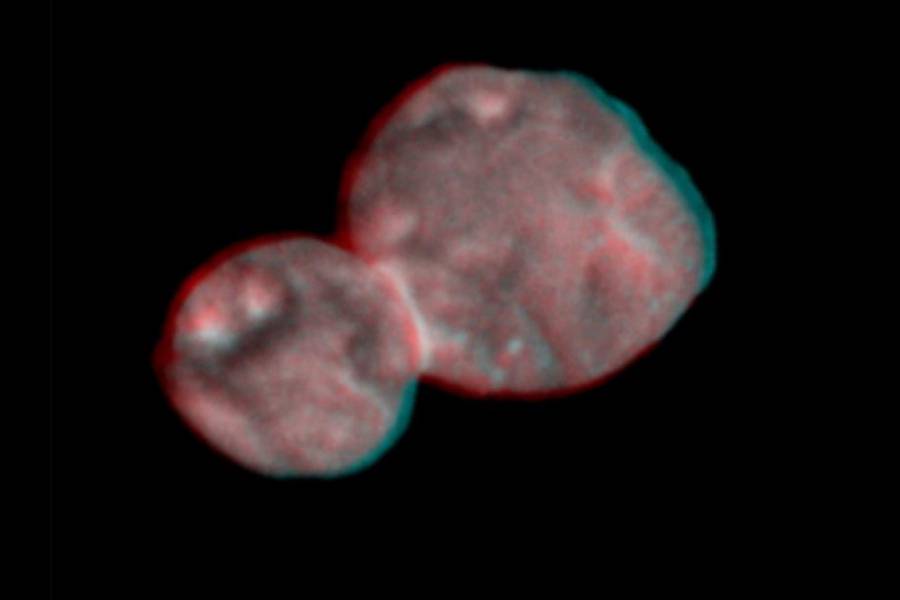- Name
- Geoff Brown
- Geoffrey.Brown@jhuapl.edu
- Office phone
- 240-228-5618
Data from NASA's New Horizons spacecraft, which explored Kuiper Belt object Ultima Thule earlier this week, is yielding scientific discoveries daily.
In the past few days, the mission science team has found no evidence of rings or satellites larger than 1 mile in diameter orbiting Ultima Thule, nor have they found any evidence of an atmosphere. The color of Ultima Thule matches the color of similar worlds in the Kuiper Belt as determined by telescopic measurements, and the two lobes of Ultima Thule are nearly identical in color—matching what we know about binary systems that haven't come into contact with each other but orbit around a shared point of gravity.
As an added bonus, the team created a stereo image of Ultima Thule, which reveals the object's 3D shape when viewed with stereo glasses.
#UltimaThule, now in stereo! The @NASANewHorizons science team created the first stereo image pair of Ultima Thule. This image can be viewed with stereo (3D) glasses to reveal the unique Kuiper Belt object's three-dimensional shape. https://t.co/fKsyLeEyyq pic.twitter.com/fvKvHMSMey
— Johns Hopkins APL (@JHUAPL) January 3, 2019
"The first exploration of a small Kuiper Belt object and the most distant exploration of any world in history is now history, but almost all of the data analysis lies in the future," said Alan Stern of the Southwest Research Institute in Boulder, Colorado.
Data transmission from New Horizons will pause for about a week while the spacecraft passes behind the sun, as seen from here on Earth. Data transmission resumes Jan. 10, starting a 20-month download of the spacecraft's remaining scientific revelations.

"Those of us on the science team can't wait to begin to start digging into that treasure trove," Stern said.
New Horizons completed the farthest flyby in history when it came within about 2,200 miles of Ultima Thule at 12:33 a.m. on Jan. 1, zooming past the object at more than 32,000 miles per hour. The Kuiper belt object is 4 billion miles from Earth.
The Johns Hopkins Applied Physics Laboratory designed, built, and operates the New Horizons spacecraft, and manages the mission for NASA's Science Mission Directorate. The Southwest Research Institute, based in San Antonio, leads the science team, payload operations, and encounter science planning.
Posted in Science+Technology
Tagged applied physics laboratory, nasa, new horizons









